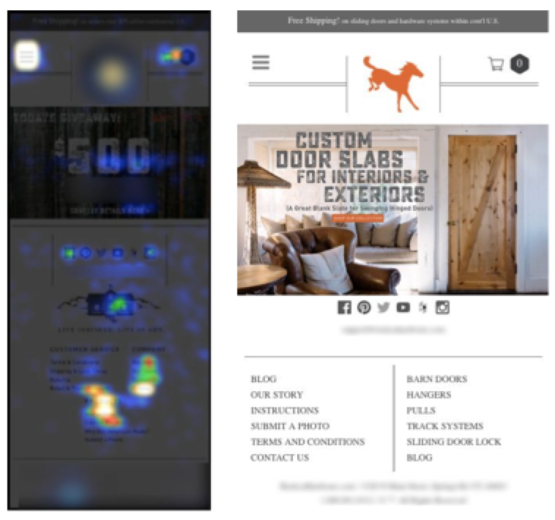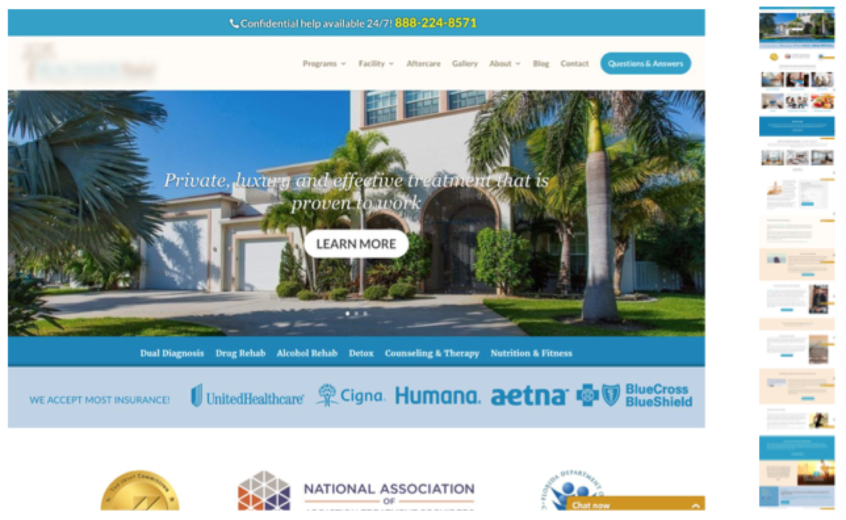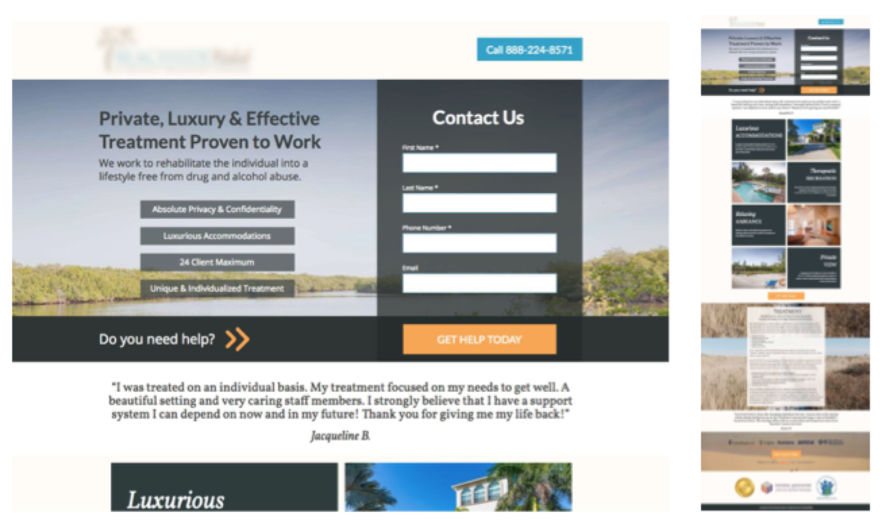Tools Providing Audience Data for Optimizing Landing Pages

Optimizing your landing pages for the right audience is the key to having a successful CRO program. Today I’m going to walk through the tools that will provide you the knowledge and data you need to have to make these optimizations.
The ultimate goal of these tools is to gather data about your users. Who is your audience and how do they behave on your site? To receive the most gains from the testing we do on our landing pages, we need to ensure that our audience is the reason behind the change we’re testing. Is there data telling us that this piece of the landing page needs to be optimized? With this in mind, every test is going to have a purpose. Every test is going to show value.
[bctt tweet=”Every test should have a purpose.” username=”samantha__kerr”]
While gathering data about who your audience is and how they behave on your site is important, their feedback is just as important. There are a number of ways to get this feedback: polls, feedback tools, emails, surveys, etc. Feedback from your users gives you language, words, tone, and feelings straight from your target audience. See how they’re talking about your service or product and utilize their language on your landing pages. Notice the positive and negative comments they have about their experience and incorporate this into your landing page optimizations.
As we mentioned, in order to gather this data and learn what you need to know about your audience, you need the right set of tools.
The Tools for Gathering Audience Data
There are a handful of tools that you can utilize to capture data about your audience. We’ll cover four main tools we utilize but please don’t limit yourself to these. Any data you can capture about your audience and any feedback you can gather from your users is only going to benefit your optimizations and your landing page performance in the long run.
Keep in mind, these tools will give you the best results used together. Analyzing the results you gain from these tools together, as building blocks, will help you better understand the behavior of your audience. We’ll talk through some examples and you’ll quickly see how the best tests come when we understand our audience’s behavior as a whole, rather than taking creating a test based on one tool alone.
Analytics
An analytics platform, such as Google Analytics, can give you so much information about your users. Don’t let this overwhelm you. In Analytics as the Foundation for Successful Landing Page Optimizations I explain how analytics data lays the groundwork. Again, there is so much information available to you within Analytics it would be impossible for me to cover everything. I’ve simply provided a decent introduction.
To be brief, analytics will help you do the following:
- Identify your target audience (i.e. gender, demographics, device)
- Identify which pages contain the most traffic
- Locate potential red flags
- Analyze the behavior of specific audiences or specific landing pages
In the following example, we learned that our users were navigating further into the site to learn more information about the company. Our goal was to keep them on the landing pages and ultimately, encourage them to convert. Therefore, we tested bringing the benefits to their attention by changing the font color to orange, causing them to stand out against the other text.
Control

Variation

This test has resulted in a 5% increase in conversion rate but it has also seen a 6% increase in pages/session. While the conversion rate increase is slight, it’s still positive. However, our goal was to eliminate the users want to explore more of the site and in the end, they’re viewing more pages. As you can see, after utilizing the other tools we will talk about, we learn more about the users and why they behave in certain ways and we will ultimately, perform better, more targeted tests after having all of this information.
Heat mapping
Heat maps will give you information surrounding the activity on the landing page. You’ll learn which components of a page receive the most activity, if the entire page is scrolled through and seen, and which types of users are clicking on which components.
In this example, we noticed the activity on this mobile home page indicated that users weren’t aware what this company sold or what it was about. The only users were navigating into the site was via the hamburger menu or the footer. The attention was focused on the “Company” section of the footer. Therefore, we encouraged the client to test a longer mobile home page template that included in-line navigation indicating what kind of products were sold.
Control

Variation

You can see that within the variation, in-line navigation, featured products, and the benefit of being crafted in the USA have been added to the mobile home page. This immediately clarifies what types of products this company sells, gives users other access points into the site, and presents a benefit of this company. This test resulted in a 20% lift in purchases for the client.
Usertesting
Usertesting requires creating tasks that you have users complete on your site. These can be recordings that you watch within a platform or users you sit down with to complete these tasks. You will supply questions and prompts for the users and they’ll carry out these prompts while narrating their thought processes, feelings, and opinions. Performing tests in this manner will allow you to witness friction with the user’s explanation. You can also analyze what users are intending to do versus what they actually do.
The following test came from analyses of usertesting, heat maps, and analytics. This home page did not receive much scroll activity. When we tested users via usertesting, we noticed users scrolling the length of the home page, not stopping, and discussing how long the page was. As they scrolled, nothing caught their attention or caused them to stop at any specific section to read information. Via heat maps and analytics we were able to determine which information users seeked out the most.
Control

Variation

Utilizing all of these findings, we created a dedicated landing page that focused on gaining contact form leads while containing the specific information that users were seeking. The images to the right are the full-length pages, while the images on the left or just snapshots of the content at the top of the page. The dedicated landing page has resulted in a 190% lift in contact form submissions.
User behavior & feedback
A tool such as Hotjar will give you many types of insights such as user recordings, funnel and form analysis and user feedback. All of these come from your organic users. There are many ways to utilize tools like these:
- Analyze the recordings to notice themes in the behavior or bugs on the site
- Are the majority of users dropping off at a certain field in your forms?
- Ask users who have been in their cart longer than 30 seconds if there’s a reason they aren’t checking out
- Get general feedback from users on their overall feelings of your site
I’ve covered this last example on the blog before, but it’s a great example of how these tools act as building blocks.
By diving into analytics, we found that almost 20% of our customers who were checking out on our client’s e-commerce site were dropping off when they got to the address step of the checkout process.

It was worrisome that we were losing this many customers so close to the purchase. By digging into our Hotjar user recordings and experiencing the funnel ourselves, we identified the main cause of this drop-off.

Many users received this error message when filling out their address, even if filled out correctly. Even with a way to move forward as is, regardless of the error message, this error was causing friction with the audience and needed to be addressed.
Final Thoughts
As stated at the beginning, the ultimate goal of these tools is to gather data about your users. You’re certainly not limited to these tools and there are many types of tools out there to choose from. The main thing to take away from this is to ensure you have a way to capture data about your users and their behavior.
To be certain you’re creating impactful optimizations and testing with a purpose, you need to be optimizing for your audience.



